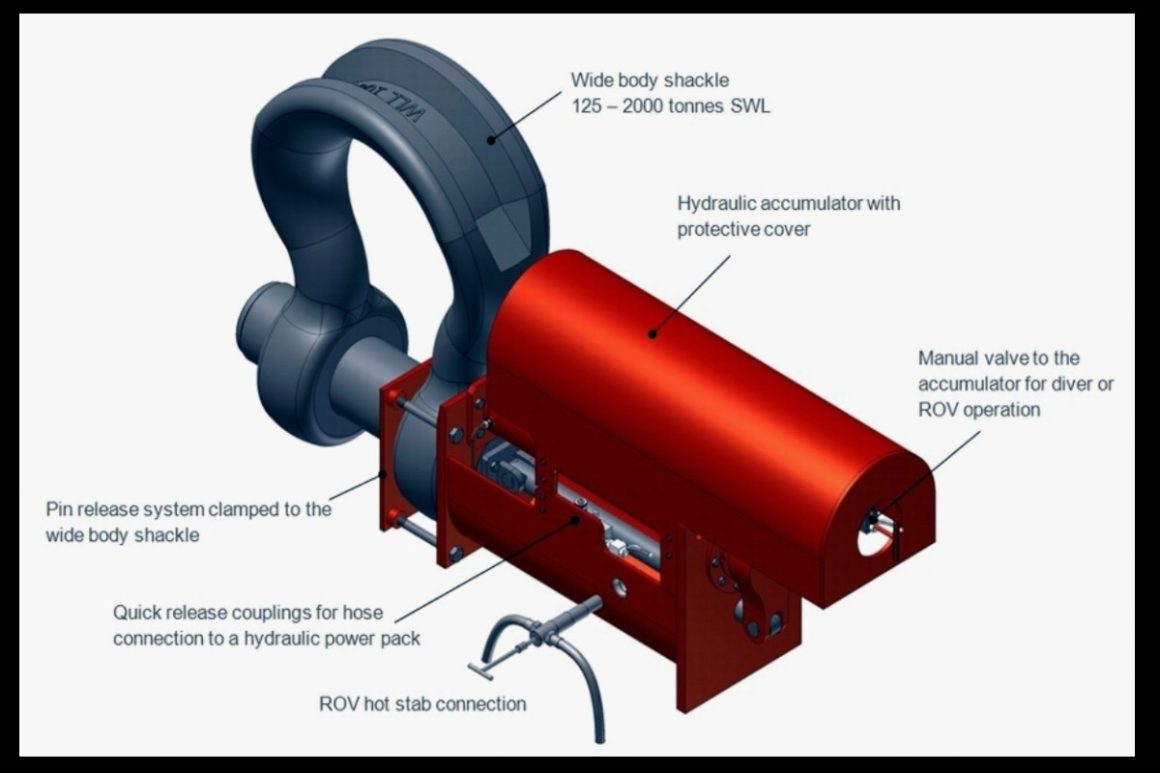Hydraulic release shackles are interesting and essential components of many industrial activities are hydraulic release shackles. This blog will explore what you need to know about hydraulic release shackles.
Table of Contents
What is a Hydraulic Release Shackle?
Structures on the surface or submerged are lifted and positioned using Hydraulic Release Shackles (HRS). HRS is primarily used to securely bind or release shackle links in places with restricted access and challenges to face-to-face communication. By enabling the remote release and engagement of lift rigging from elevated structures, they are utilized to install and decommission onshore and offshore constructions. For quality hydraulic shackle, find a reliable provider.
Umbilical cords hydraulically connect the release shackles of IQIPs standard range. Additionally, they may be modified to incorporate ROV-friendly options that can store hydraulic energy for use in underwater activities. Visit IQIP’s official website to learn more about IQIP.
How Do They Work?
The theory behind hydraulic release shackles is straightforward but clever. The shackle is opened and closed using hydraulic power. Fluid pressure within a hydraulic cylinder in the shackle applies force to the pin, locking it in or opening it. This system’s greatest feature is that it can be remotely operated, which is a huge benefit when manual operation is hazardous or unfeasible.
The Main Benefits
The advantages of hydraulic release shackles are as follows:
- Safety comes first: This is the biggest benefit of hydraulic release shackles. They lessen the chance of mishaps by releasing big, possibly hazardous loads without needing someone to be close by.
- Precision Control: There is a great deal of control over the load with these shackles. This accuracy is essential for delicate activities where a load’s precise placement can make or destroy a project.
- Heavy Lifting Capability: Because of their exceptional robustness and design, they can lift loads that would be difficult or impossible to handle in any other situation.
- Remote Operation: The ability of these shackles to be operated remotely is revolutionary, particularly in challenging situations like deep-sea operations where direct human participation is impractical.
Considerations for Hydraulic Release Shackle Use
Though they are immensely helpful, bear the following in mind:
- Frequent Maintenance: These shackles require routine maintenance to operate properly and safely, like any other hydraulic system.
- Appropriate Training: To prevent mishaps, operators must have sufficient training in their use.
- Environmental Elements: Think about the setting in which the shackle will be utilized. Shackles used in deep-sea activities, for example, must be composed of materials resistant to corrosion and high pressure.
Hydraulic Release Shackles’ Future
We expect many innovative applications for hydraulic release shackles as innovation development will be significantly more secure and powerful in combination with robotized frameworks and advances in materials and plans.
Final Thoughts
Even though hydraulic release shackles are inconsistent, they are crucial for some areas. They are a fundamental instrument in the advanced world because of their solidarity, precision, and security. In this way, recollect the secret legends — the water-driven discharge shackles — that empower the huge extensions and seaward oil stages you see from this point forward.


